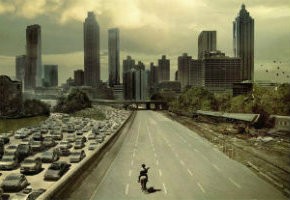Attack of the zombies

If you've been paying much attention to pop culture, you've sighted more than a few zombies. The living dead shamble ominously through comic books, books, movies, video games and television shows. Their movie appearances include dramas and even a few comedies. They've appeared in literature with mashups of zombies and characters from Jane Austen's Pride and Prejudice. On television, they are the subject of AMC's series The Walking Dead.
The zombie genre is maturing. All zombie plots still include great hordes of the stalking dead, with heroes who hold off the hordes with guns, axes, shovels and whatever other bludgeoning instruments come to hand (it is not a genre for the weak of stomach). But productions such as The Walking Dead focus more on the drama and dilemmas of the living than on the spectacular destruction of the undead. What do you do if a zombie is your son or spouse or great aunt? Is a world overrun by zombies a world that children should be born into? How can the living remain human and humane when they regularly must destroy zombies?
The maturation of the genre helps to account for some of the popularity that zombies now enjoy. But there are other things going on that give them resonance in our culture. One factor is simply how crowded our world and lives have become. In traditional cultures, the ordinary person encountered no more than a dozen or so people each day, and these were almost always familiar faces. Our urban and suburban routines, however, bring us into contact with scores of people each day—not just family but workmates and a slew of unfamiliar faces belonging to cashiers, gas station attendants, tollbooth operators, baggage handlers and restaurant staff.





